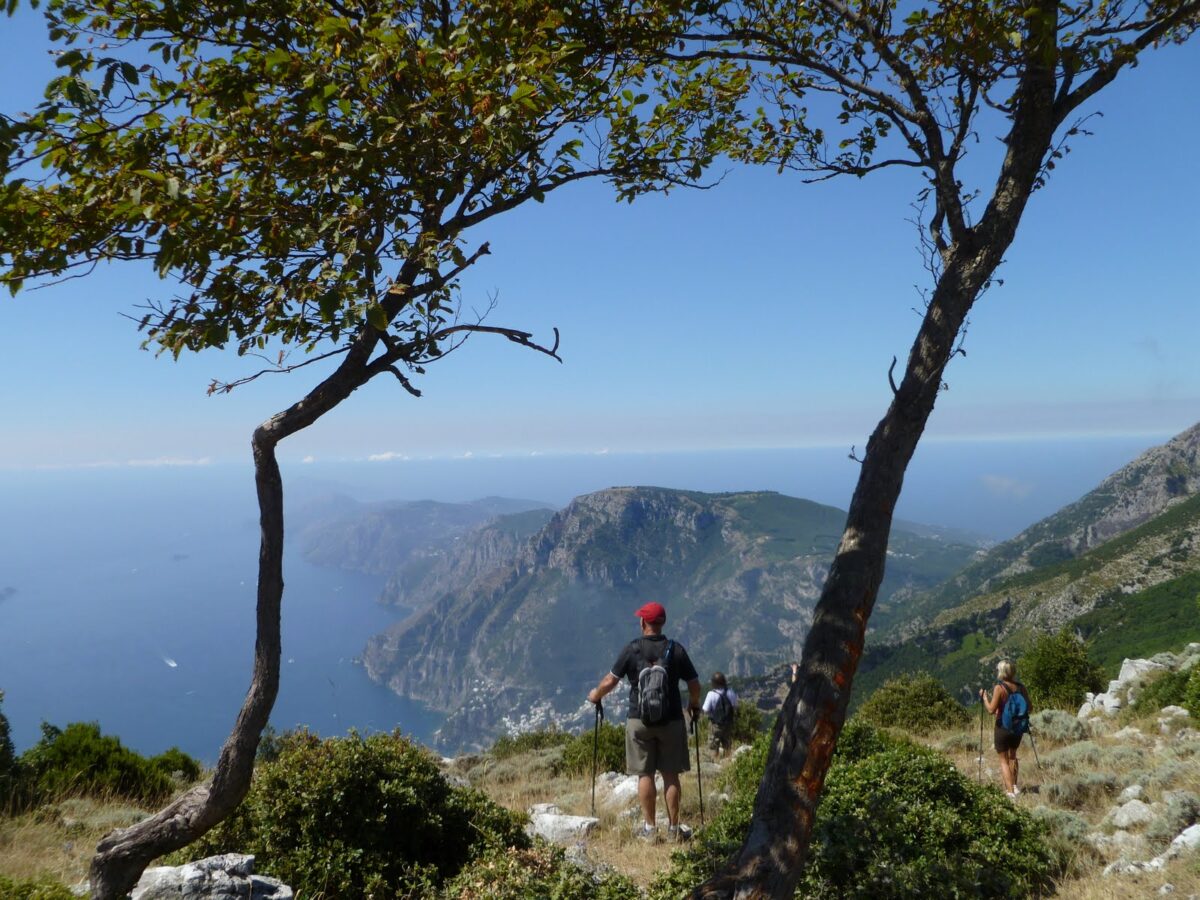At sea level the Amalfi Coast is made up of picturesque resorts, tiny beaches and crags dropping into the sea. But the seashore is just a small part of the geography of the Sorrento Peninsula. The famous steep slopes of pretty resorts Amalfi and Positano extend up and up, into the high summits and plateaus of a mountain range, the Monti Lattari. Networks of footpaths criss-cross the slopes between villages and offer a whole different holiday experience to the busy resorts below. This is a popular destination for hiking holidays, and even ‘regular’ holidaymakers can easily incorporate some marvellous short walks into their holiday itinerary.
>About the Amalfi Coast
At higher levels, the coast boasts woods, wilderness, agricultural terraces, ruins and old mule paths. Explorers will find strikingly different terrain and vegetation at different altitudes, from the wild rocky landscapes of the mountain summits to the lemon groves and hotels nearer the sea. The walking trails here come with staggering views over the coastline, out to sea, over the little Galli islands and as far as Capri. In the spring and summer butterflies and flowers add colour to the hillsides. The weather is likely to be sunny, and wonderful meals of fresh local ingredients will be waiting at the end of the day. Invigorating hikes can be interspersed with a rich choice of other holiday activities: boat trips; beaches; sightseeing; garden tours; lazy lunches.
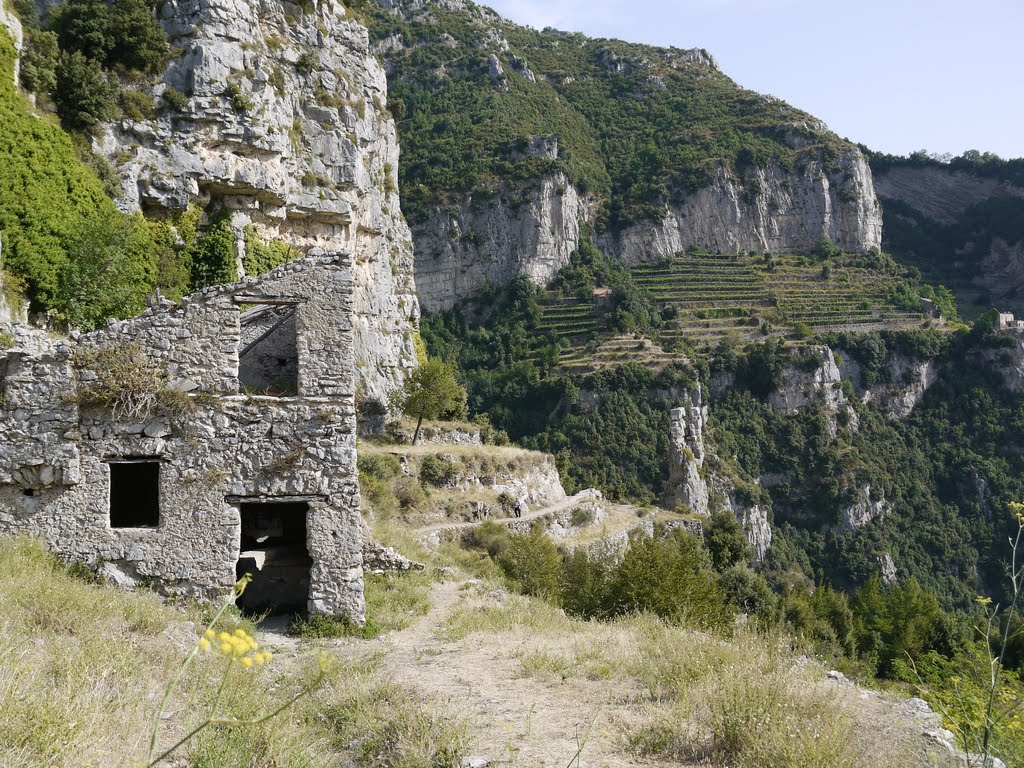
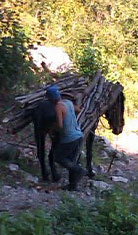
The whole coast is lined with ancient tracks and pathways. Until recent decades, the paths and steps were used by local residents to travel between villages, to reach their farmed terraces and for everyday transport on foot or with mules. Some routes are still used for these purposes, but many terraces and paths have been abandoned as younger generations have left the land and moved away or into new industries such as tourism.
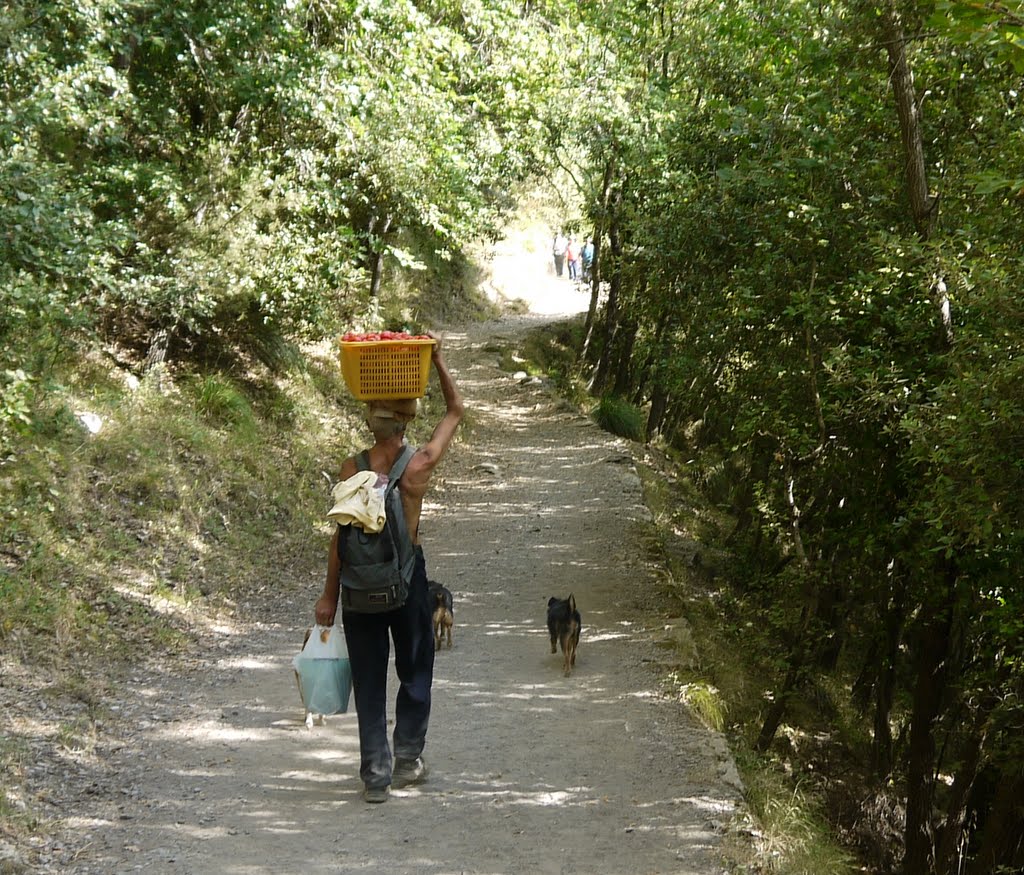
Books and maps
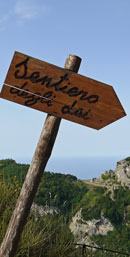
A map is useful, but the steep gradient of the coastline means that a normal two-dimensional map can be hard to follow, as paths seem to pile on top of one another. The Sunflower ‘Landscapes’ book of walks and car tours is an invaluable guide to walking on the coast, which has been through several editions over the years. The book provides really useful advice and information including bus routes and timetables; uploads can be downloaded online. The author divides footpaths up into sections, carefully described, which the holidaymaker can put together for their chosen length of itinerary. The area covered includes Sorrento, on the other side of the peninsula.
> Sorrento, Amalfi and Capri: Car Tours and Walks (Landscapes)
> Kompass map – Penisola Sorrentina: Vesuvio, Pompei, Salerno, Sorrento.
Practical advice
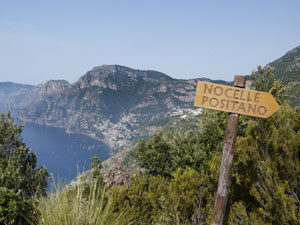 In July and August temperatures are very high, and these months are not best suited for energetic hiking. In winter the mountain tops can be snowy. The ideal months for walking are probably April and May, although of course you should balance up these milder climates against your other holiday requirements; June and September will provide more beach and boat opportunities. Autumn has higher rainfall than spring, but similarly comfortable temperatures.
In July and August temperatures are very high, and these months are not best suited for energetic hiking. In winter the mountain tops can be snowy. The ideal months for walking are probably April and May, although of course you should balance up these milder climates against your other holiday requirements; June and September will provide more beach and boat opportunities. Autumn has higher rainfall than spring, but similarly comfortable temperatures.
Walking on the Amalfi Coast is generally straightforward, particularly the lower-level walks, but there are lots of steps, so be prepared for some exertion. When the weather is hot, carry proper equipment (a hat, sunblock) and consider avoiding the hottest part of the day. You should always carry a bottle of water to drink, and there are quite a few water taps where you can refill your bottle. Walking poles may be a good idea if you are concerned about your knees.
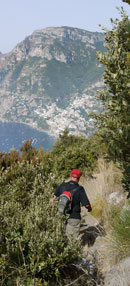
The ‘easy’ lower-altitude walks on paved paths described below don’t really require any special footwear, as long as your shoes are comfortable. For longer and higher-level walks, I’d recommend proper walking shoes or boots. Tough enclosed boots are best on some of the bare rock and loose gravel stretches, but in hot weather something lighter may be sufficient. I have a pair of semi-open North Face walking shoes, which are very sturdy, have good soles and let my feet breathe. On rougher footpaths I found I had to empty out dirt and pebbles, but for warm-weather walking on well-made paths they were ideal – I could slip them off instantly to bathe my feet in streams or the sea, and they looked inconspicuous in town centres.
As the landscape is so steep, circular routes from sea-level accommodation or from a parked car are not a very good option unless you really enjoy slogging up long flights of steps. A preferable tactic, if you are staying in one of the seaside resorts, is to take public transport or a taxi to your starting point, and enjoy a walk which contours and descends towards sea-level, finishing up at your base on foot or by catching a bus or ferry along the shore.
Use commonsense when planning hikes on the hillside – take proper equipment and first aid and, as normal in the countryside, be alert for potential hazards such as steep drops, overgrown paths, the occasional snake, dogs and forest fires. Local people are a good source of advice and assistance.
Easy walks
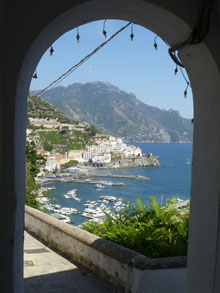 The easiest walks to embark upon – easy to navigate, though the gradients can be physically demanding – are the stretches of well-built paths and steps linking settlements. Routes which are still in everyday local use today are generally well-maintained and signposted. Local people should be able to give you directions where necessary, although on many of the downhill walks it would be hard to get lost, as you are basically descending towards the sea and can generally see your destination. By joining together signposted stretches between towns, you could extend this kind of amiable village-to-village walking into longer expeditions, taking a picnic to enjoy in some panoramic spot.
The easiest walks to embark upon – easy to navigate, though the gradients can be physically demanding – are the stretches of well-built paths and steps linking settlements. Routes which are still in everyday local use today are generally well-maintained and signposted. Local people should be able to give you directions where necessary, although on many of the downhill walks it would be hard to get lost, as you are basically descending towards the sea and can generally see your destination. By joining together signposted stretches between towns, you could extend this kind of amiable village-to-village walking into longer expeditions, taking a picnic to enjoy in some panoramic spot.
Some extremely pleasant walks fall into this straightforward category. Although the paved paths mean you won’t feel you’ve quite escaped civilisation, you will certainly see a completely different, rural face to the Amalfi Coast. Lanes descend through terraces and strips of vineyard, past scruffy houses where tomatoes, figs and bread are laid out to dry in the sun. A short walk from one popular tourist sight to another can take you through an Italy where time has barely moved on; a much more authentic and traditional world.
By using buses and doing a spot of research, it isn’t hard to ‘dabble’ in some walking along the Amalfi Coast, and I’d strongly recommend taking at least one opportunity to get out of the towns for an hour or two and see the quieter charms of the countryside.
Ravello to Amalfi, Ravello to Minori
There’s a very helpful tourist information office in the famously panoramic hillside village of Ravello. At the time of writing this office hands out free maps showing walks around Ravello, with clear labelling and also walk descriptions (available in English). This makes a great starting point, both literal and metaphorical, for some picturesque walks. Ravello is easily reached by frequent buses from Amalfi, and it has lots to offer for a half-day’s sightseeing. After visiting the village’s sights, and perhaps enjoying lunch at one of its tourist restaurants, you can descend to the coast on foot. There is a choice of routes down to Amalfi through lemon groves and terraces – one straightforward walk descends from outside the Villa Cimbrone garden to Atrani, a seaside village just around the headland from Amalfi.
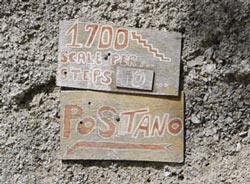
An alternative is to descend from Ravello in the other direction, to Minori. This is a low-key beach resort, and is connected to Amalfi by bus and also by summer ferries (check the timetable in advance). When I did this walk I was rushing for the last ferry, but even at a fast pace I was able to appreciate the views en route. A fairly direct, signposted route starts by the Villa Rufolo entrance; a longer version is described in the Landscapes book. The path descends through Torello, a picturesque hamlet on a spur of ground which is reminiscent of how the other coastal villages must have been before tourists arrived. I passed giant marrows growing on cultivated terraces, locals trekking uphill carrying plastic bags full of oranges, and an elderly woman in black washing pots under a public tap near the church. This route was all on paved paths and steps, and took around 40 minutes.
Montepertuso to Positano
If you don’t mind a trek that includes a lot of steps, this is a short and simple walk offering picturesque views of Positano as you descend from the mountainside village of Montepertuso, where a large pierced cliff jutting from the hillside makes a dramatic landmark. There are local buses from Positano to Montepertuso, and the little village has a couple of restaurants so this would make a nice after-lunch constitutional. Two routes lead down to Positano, one starts to the right-hand side of the village church and descends through olive groves. The bus continues to Nocelle, another possible starting point for a descent into Positano.
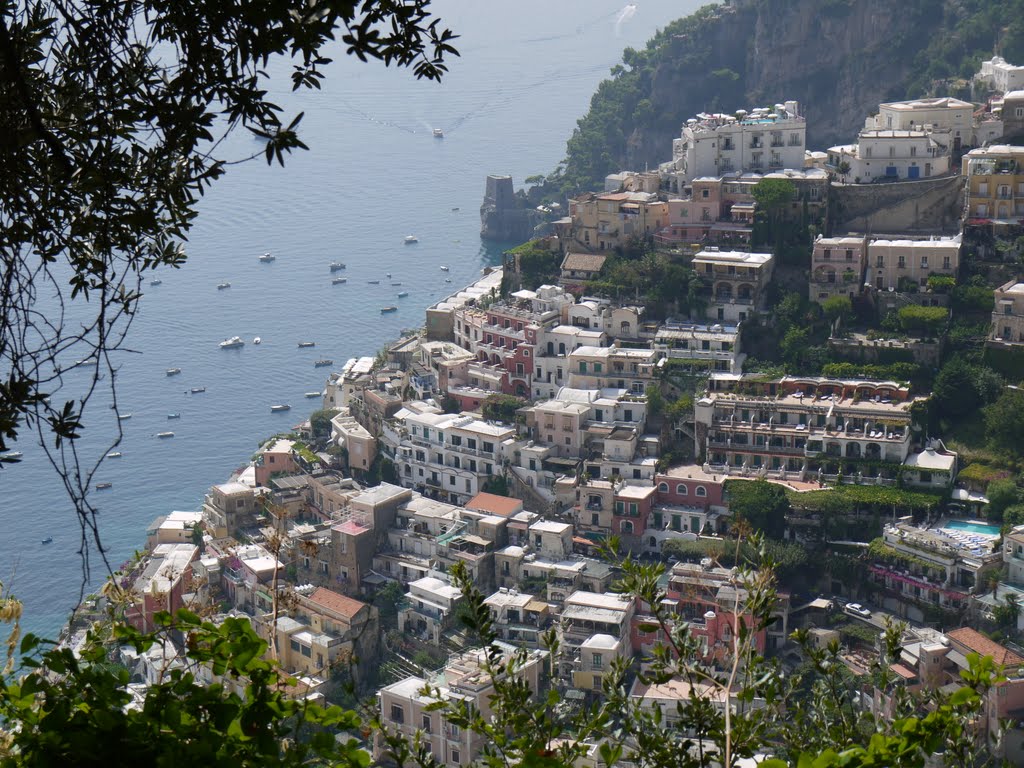
Walk of the Gods
There are also more ambitious high-level walks up in the heights of the Monte Lattari. For these you’ll need to make more of an effort, with maps and proper hiking kit. The most famous route is the Walk of the Gods (or Footpath of the Gods), the Sentiero degli Dei. This is a spectacular stretch of path between Bomerano, up in the hills, and the seaside resort Positano. The full walk from Bomerano to Positano takes around four and a half hours, and the overall descent is 638m, although most of this can be avoided by taking a bus for the final stage of the route, a steep descent by steps to Positano.
Bomerano is part of an agglomeration of villages collectively called Agerola, and it can be reached by public Sita buses from Amalfi and also from Castellammare di Stabia and Naples. In the little main square of Bomerano, where old men sit outside their favourite bar, you’ll find a notice board with directions; locals will also be able to point you towards the start of the trail. Navigation is simple along the way; there are signposts and the footpath is clearly indicated.
The footpath, an old mule-path used before the coastline’s roads were engineered, winds along the hillside between terraces, some cultivated and some abandoned. You’ll pass inhabited dwellings and also picturesque ruins, reminders of life here before the sea-level towns became tourist honeypots. You can still pass locals walking along carrying baskets of harvested fruit and vegetables. Some sections of the walk are over wild, open hillside, with steep drops towards the sea and fantastic views. Others are through woodland – this is a very pleasant and varied route.
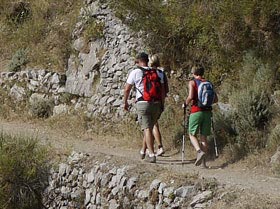 After a long contour of the mountainside, you reach the little settlement of Nocelle, where a pretty church terrace makes a good picnic spot. From Nocelle, you can descend 1700 steps or take the bus downhill to Positano. Alternatively, you can continue, partly by road, to Montepertuso, a little further on. As described above, Montepertuso is a good spot to rest, buy refreshments or enjoy a meal on the attractive terrace of Il Ritrovo. From here the route down to Positano is, again, almost entirely down flights of steps. If you’d rather cut out this bit of the walk, you can catch the local bus down into Positano.
After a long contour of the mountainside, you reach the little settlement of Nocelle, where a pretty church terrace makes a good picnic spot. From Nocelle, you can descend 1700 steps or take the bus downhill to Positano. Alternatively, you can continue, partly by road, to Montepertuso, a little further on. As described above, Montepertuso is a good spot to rest, buy refreshments or enjoy a meal on the attractive terrace of Il Ritrovo. From here the route down to Positano is, again, almost entirely down flights of steps. If you’d rather cut out this bit of the walk, you can catch the local bus down into Positano.
Information on the Sentiero degli Dei and on other footpaths in the Monti Lattari park (Parco Regionale dei Monti Lattari) can be found on the park’s official website (see links panel), in Italian.
The organised holiday option
If you would like to spend more time hiking, it is worth considering a specialist organised holiday. This will spare you from map-reading, path-finding and transport concerns, as well as providing companionship for day-long walks. Several companies organise Amalfi Coast walking trips. Most of the photos on this page were taken during a week-long holiday I went on organised by Exodus, which I found very enjoyable.
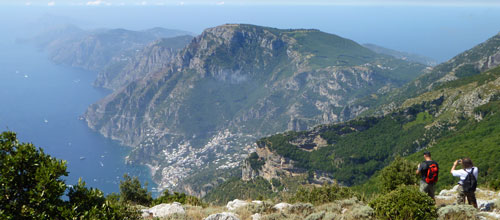
On this site
Useful links & books
Positano buses – under ‘Servizio Pubblico Urbano’
